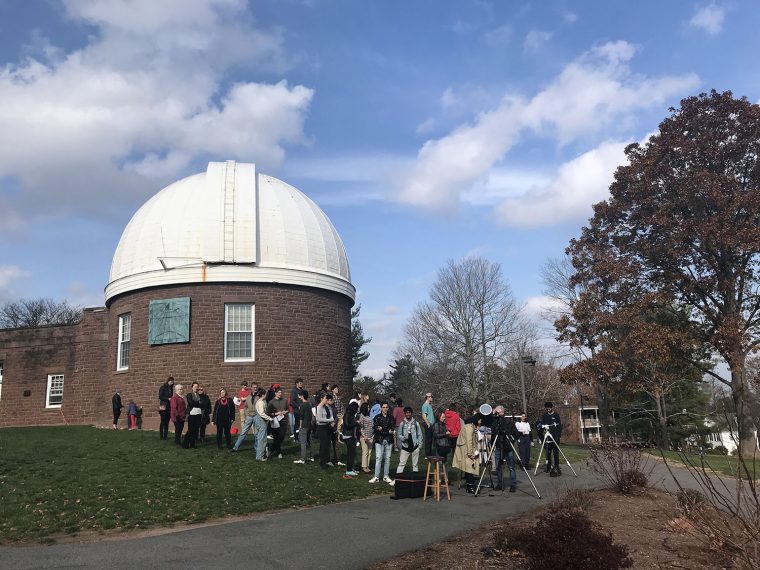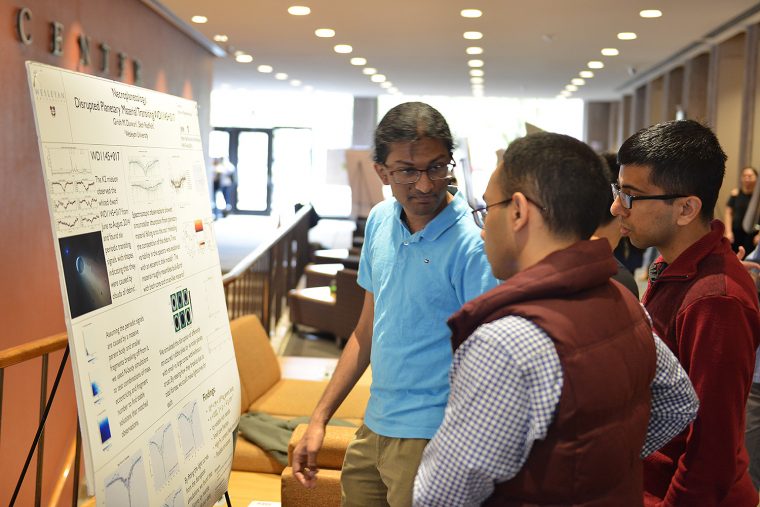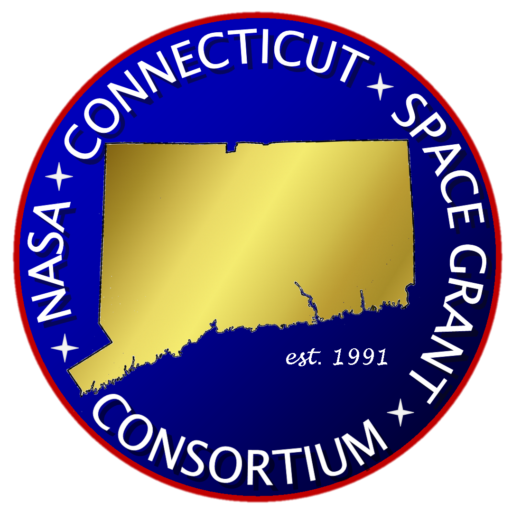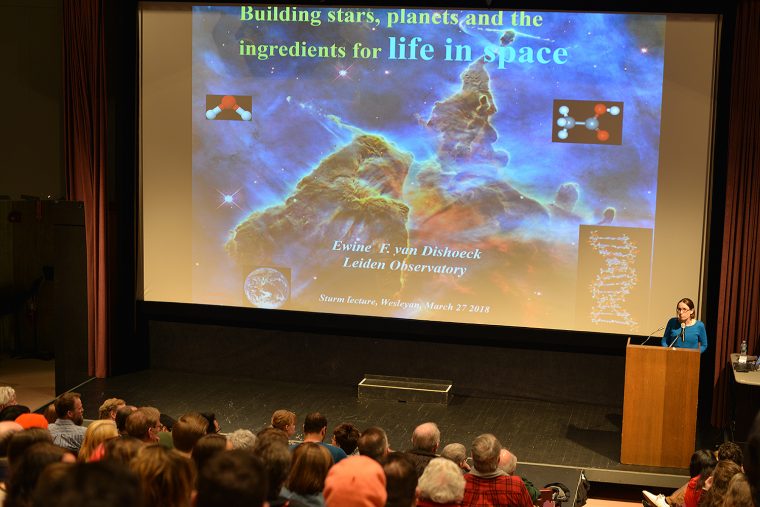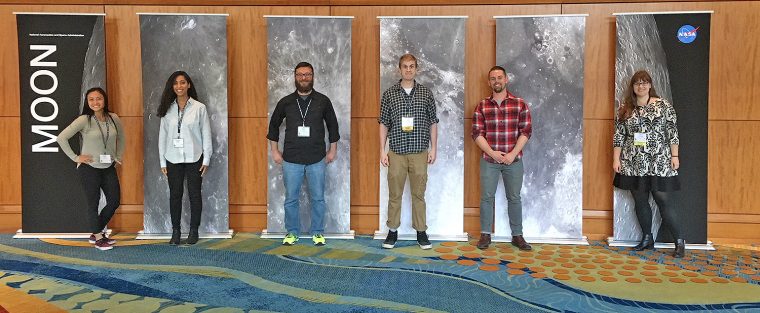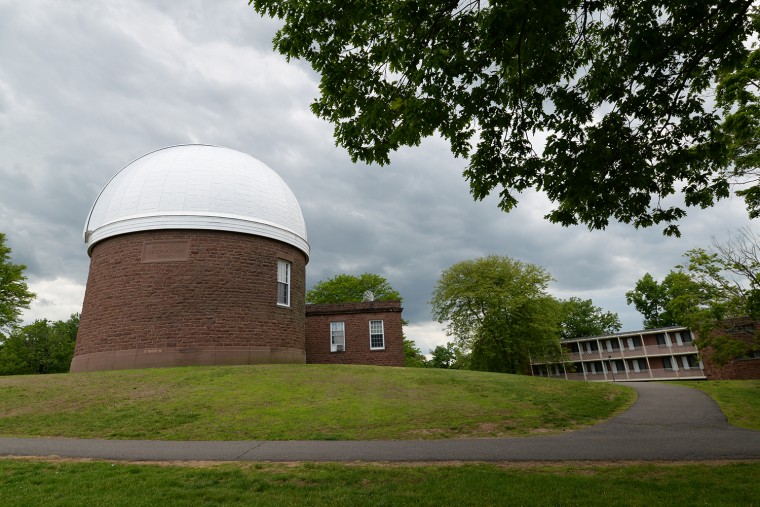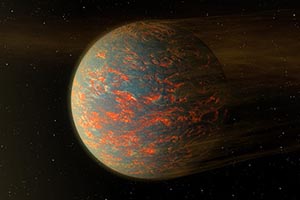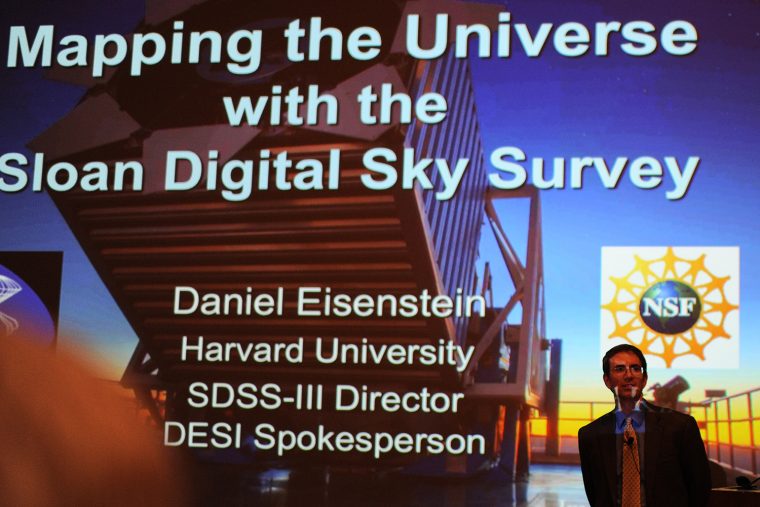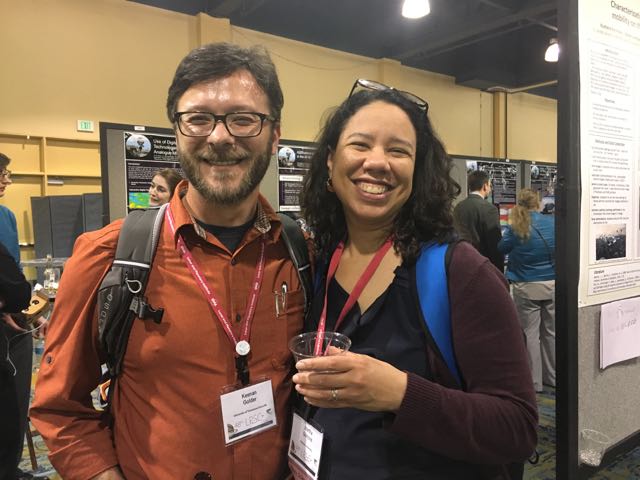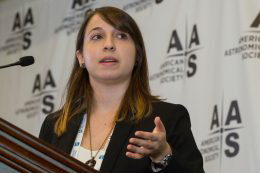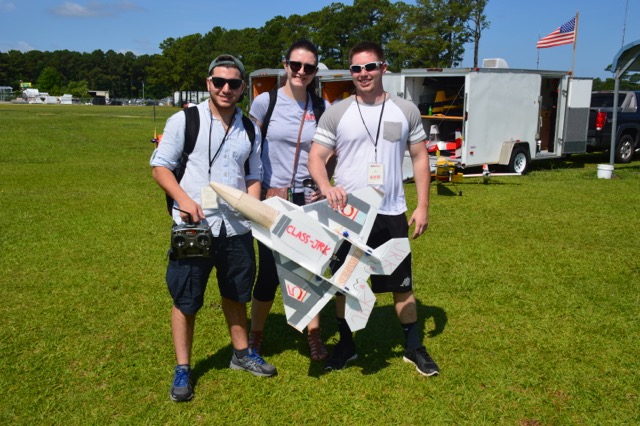For only the seventh time since Wesleyan’s founding, the planet Mercury passed directly in front of the sun, from the perspective of Earth—and Wesleyan served as a gathering place from which to learn about and observe the event. Faculty and students from Wesleyan’s astronomy department, as well as others from the University and the greater Middletown community, gathered outside the Van Vleck Observatory on Nov. 11 to witness the transit through three telescopes. The mild weather and partly cloudy conditions—particularly at the beginning and end of the transit (which lasted from 7:35 a.m. to 1:04 p.m.)—made for good viewings through…
In recognition of his exemplary research at Wesleyan, astronomy major Girish Duvvuri ’17 has been awarded a Chambliss medal from the American Astronomical Society (AAS). Duvvuri, who majored in astronomy, physics, and English, received the award during the 232nd AAS Meeting June 3–7 in Denver, Colo. There, he presented a study that formed much of his senior thesis at Wesleyan. Seth Redfield, associate professor and chair of astronomy, associate professor of integrative sciences, and co-coordinator of planetary science, served as Duvvuri's advisor. To be eligible for an award, work featured on a poster must have been done within the past year and while the presenter was an…
Three undergraduates and one graduate student received NASA Connecticut Space Grant Awards from the NASA Connecticut Space Grant Consortium (CTSGC). The CTSGC is a federally mandated grant, internship, and scholarship program that aims to inspire the pursuit of careers in science, technology, engineering, and mathematics. Astronomy and math major Nicole Zalewski '20 received a $5,000 undergraduate research fellowship to pursue her study on “Measurement of the Radar Properties of the Oldest Rocks on Venus to Constrain Mineralogy." Her advisor is Martha Gilmore, the George I. Seney Professor of Geology, professor of earth and environmental sciences, co-coordinator of planetary science, and…
(more…)
Faculty, graduate students, and alumni attended the 49th Lunar and Planetary Science Conference March 19–23 in The Woodlands, Texas. Three graduate students were awarded funds from the NASA Connecticut Space Grant that allowed them to travel to this meeting. Earth and environmental sciences graduate student Reid Perkins presented a research poster titled "Where Are the Missing Tessera Craters on Venus?" Perkins's advisor is Martha Gilmore, the George I. Seney Professor of Geology, professor of earth and environmental sciences. Earth and environmental sciences graduate student Melissa Luna presented a poster titled "Multivariate Spectral Analysis of CRISM Data to Characterize the Composition of Mawrth…
Writing in The Conversation, Roy Kilgard, research associate professor of astronomy, explains the significance of an exciting new discovery in astronomy. For the first time, astrophysicists have observed merging neutron stars using LIGO (the Laser Interferometer Gravitational-Wave Observatory) and the Virgo interferometer. Kilgard writes: This news may confirm a longstanding theory: that some gamma-ray bursts (GRBs for short), which are among the most energetic, luminous events in the universe, are the result of merging neutron stars. And it is in the crucible of these mergers that most heavy elements may be forged. Researchers can’t produce anything like the temperatures or pressures of…
A team of scientists from Wesleyan, led by Associate Professor of Astronomy Seth Redfield and graduate student Prajwal Niraula MA '18, has co-authored a paper on the discovery of three planets, or super-Earths, transiting around a nearby star, just 98 light-years away. “Super-Earths are slightly larger than Earth, and the three of them straddle the divide between the rocky planets like Earth and ice giants like Neptune,” explains Redfield. These planets were found using the Kepler Space Telescope. “Kepler has found thousands of exoplanets these last eight years, but this is the closest planetary system that Kepler has ever found, although closer planetary systems have been…
(more…)
A group of Wesleyan faculty, students and alumni attended the 48th Lunar and Planetary Science Conference in The Woodland, Texas March 20-24. The annual conference unites 2,000 international specialists in petrology, geochemistry, geophysics, geology and astronomy to present their latest research in planetary science over the course of several days. Professor of Earth and Environmental Sciences and the George I. Seney Professor of Geology Martha Gilmore coordinated Wesleyan's group. While at the event, she presented her work on the oldest rocks on Venus and Mars gully analogues on Earth. A number of her current graduate and undergraduate students attended and several…
Wesleyan Associate Professor of Astronomy Seth Redfield and astronomy student Julia Zachary '17 recently reported at the 229th meeting of the American Astronomical Society on their research using data from the Hubble Space Telescope combined with two Voyager spacecraft probes, both very long-lived and successful NASA missions. The findings were shared in dozens of news outlets from the U.S. to India to Afghanistan. According to Nature.com, "The work is a rare marriage of two of the most famous space missions — and an unprecedented glimpse at the realm between the stars." “If the Voyager spacecraft and the Google Street View car are going…
Four Wesleyan undergraduate students have received grants from NASA's Connecticut Space Grant Consortium. Astronomy major Hannah Fritze '18 was awarded $5,000 for an Undergraduate Research Fellowship Grant titled, “Searching for Intermediate Mass Black Holes in Ultraluminous X-ray Binaries.” This grant will support her research this coming semester on black holes with Roy Kilgard, support astronomer and research associate professor of astronomy. Avi Stein '17, who is majoring in astronomy, was awarded $1,000 for a Student Travel Grant. He will be presenting his research on Venus—conducted with Martha Gilmore, the George I. Seney Professor of Geology, professor of earth and environmental sciences—at…
The Hartford Courant featured the 100th anniversary of Wesleyan's Van Vleck Observatory, which will be celebrated with an exhibit and a series of events this month and next. The "Under Connecticut Skies" exhibit, located in the observatory library, will open May 6 from 10 a.m. to 6 p.m., and will remain open indefinitely during the observatory's public hours. Amrys Williams, visiting assistant professor of history, who has been working on the exhibit since last year, said the Van Vleck Observatory and the astronomy department building are part of the exhibit, telling the story of how astronomers did their work 100 years ago.…


